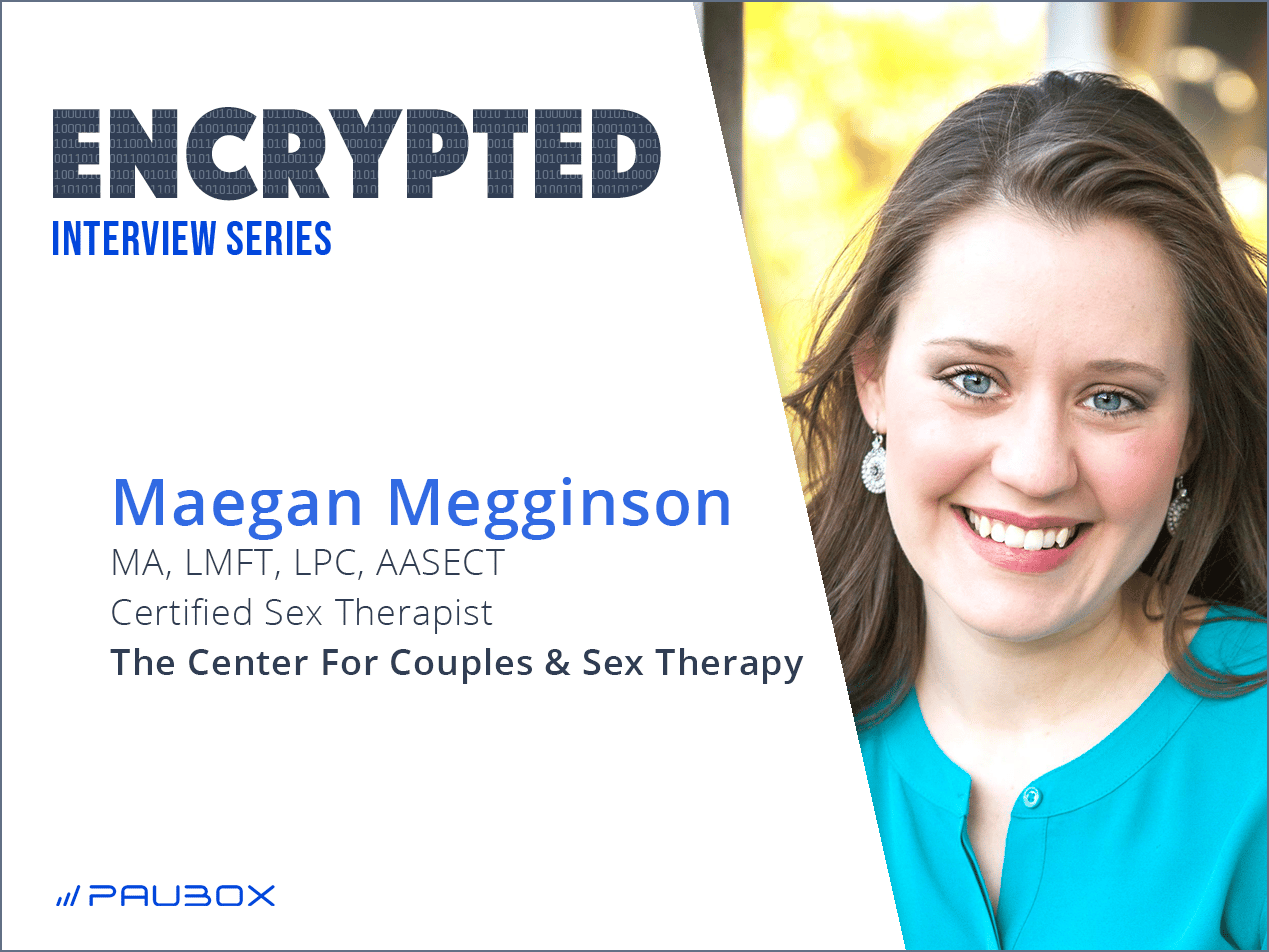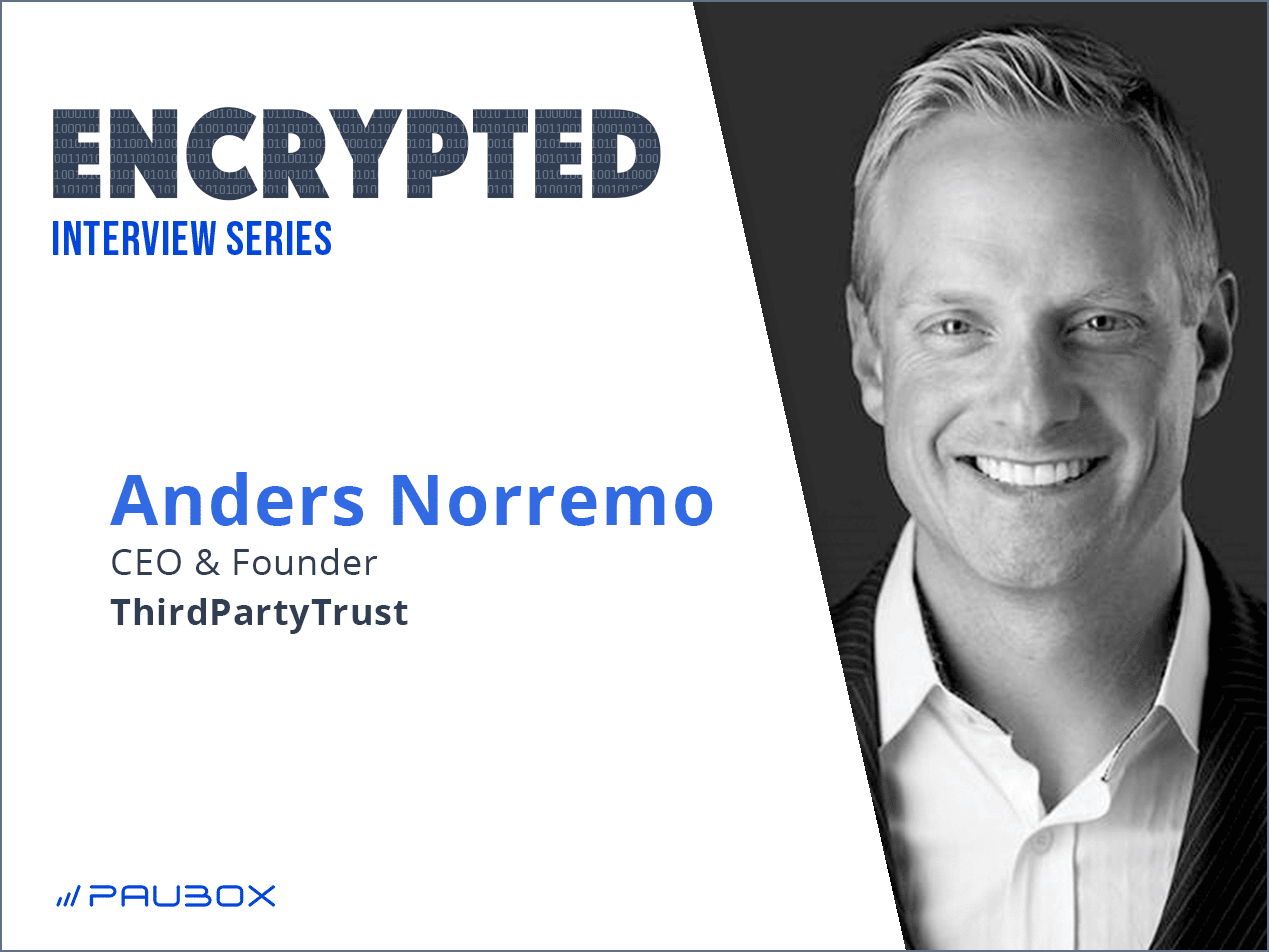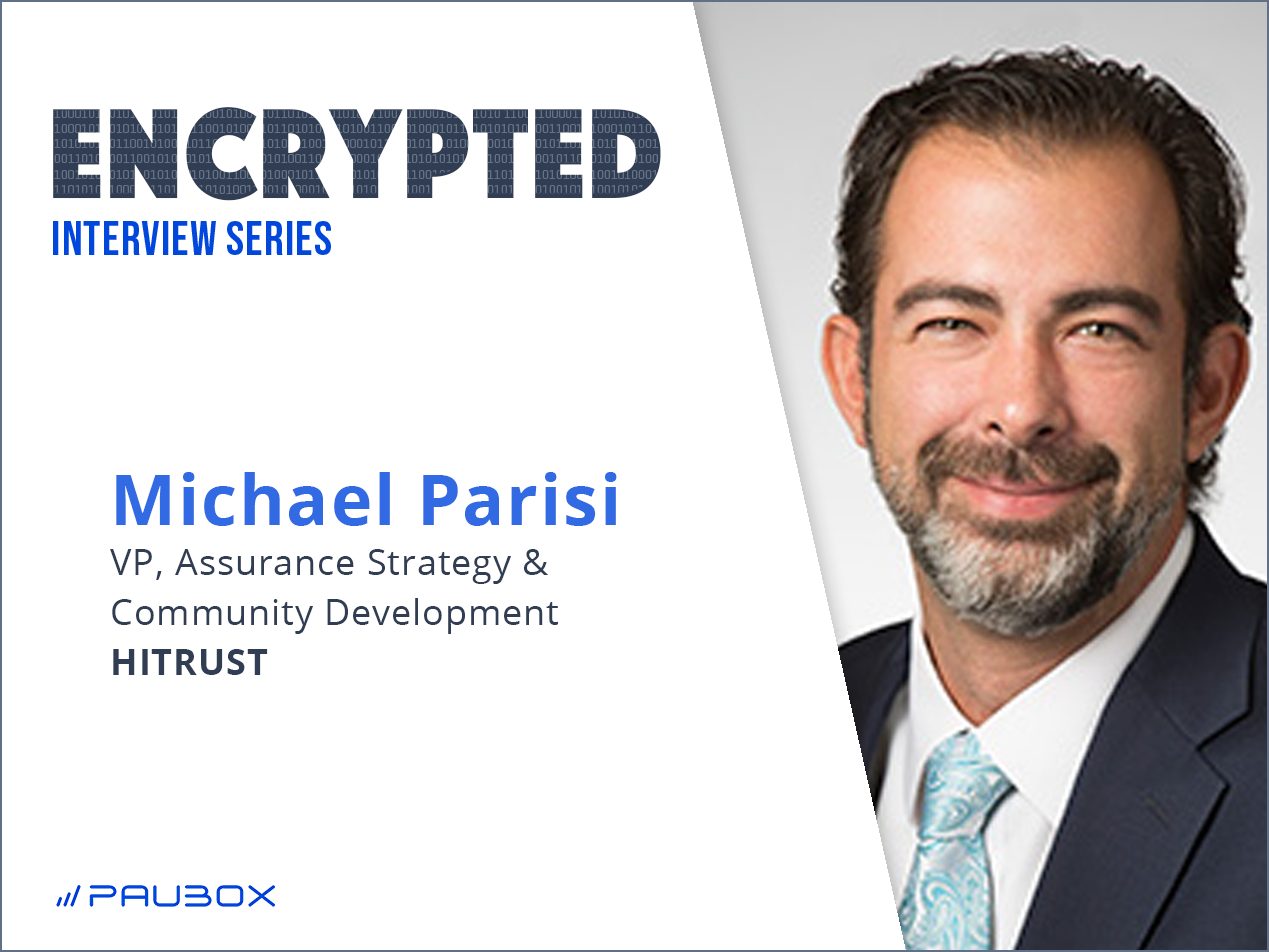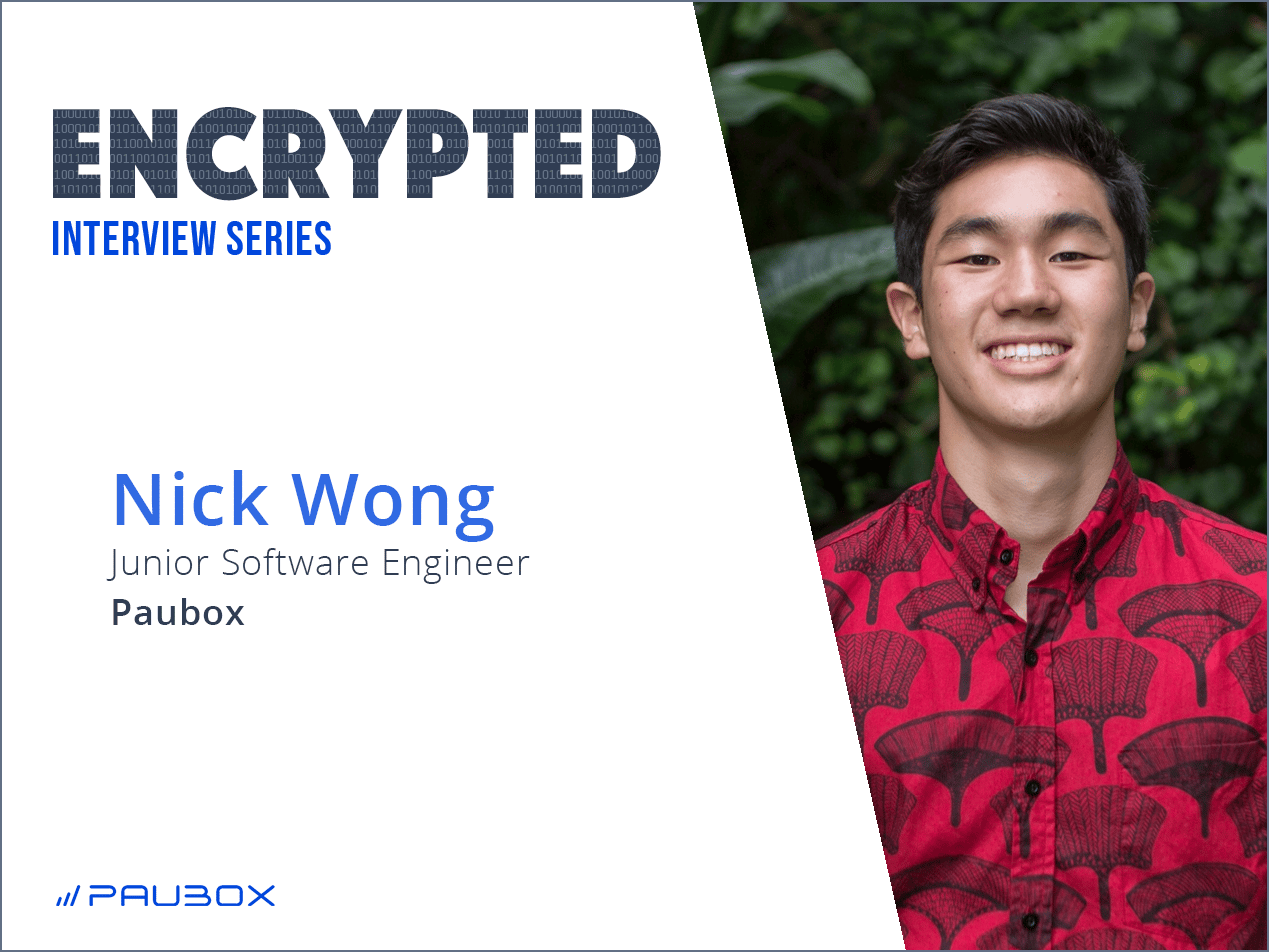
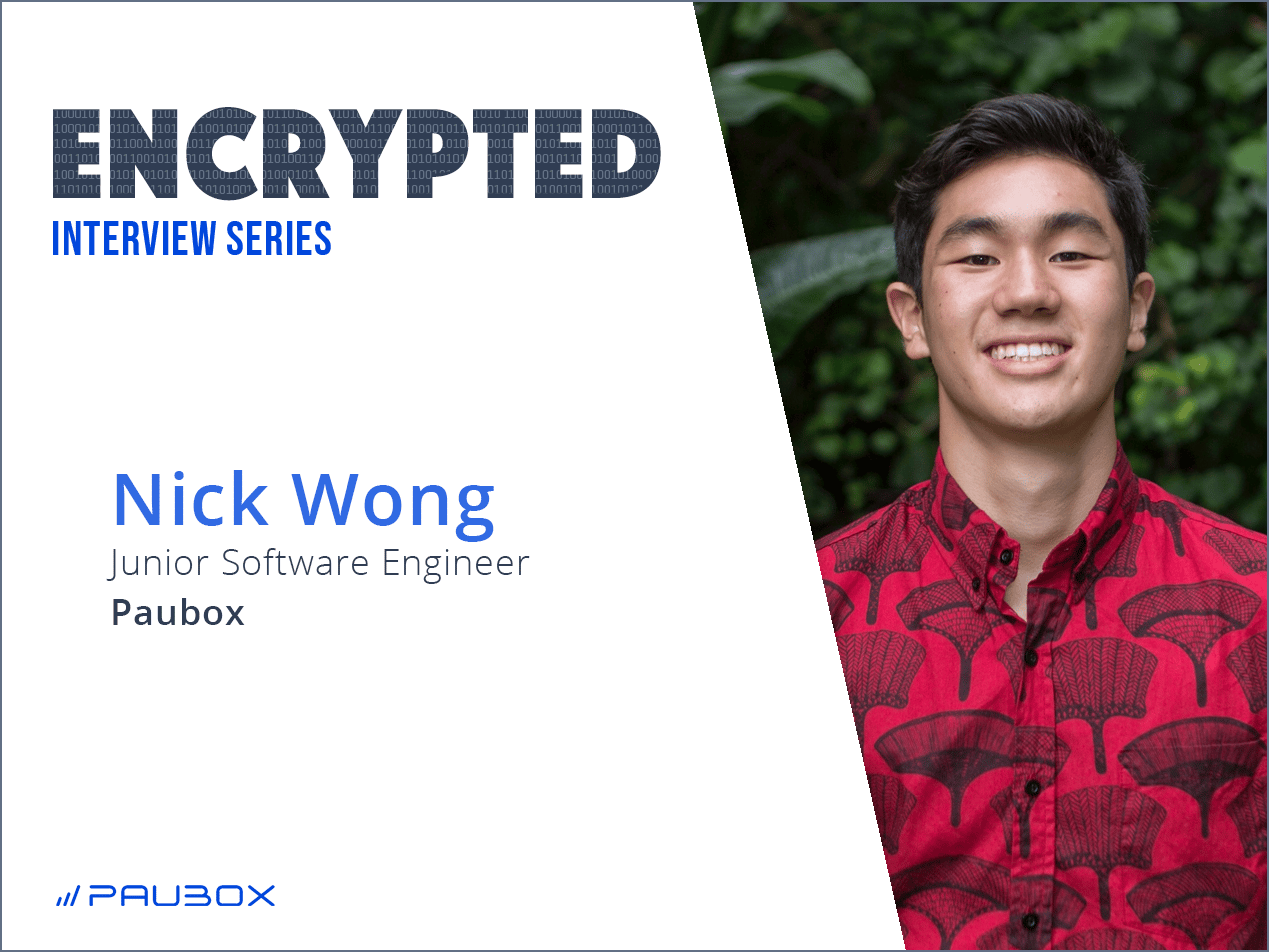
ENCRYPTED INTERVIEW SERIES
Background and education
Sierra Reed: Nick, thanks for joining me today. Can you tell me a little bit about your background and what you are doing for Paubox currently?
Nick Wong: Hi, Sierra. Thank you for having me on. My name is Nick Wong. I'm currently a junior Software Engineer here at Paubox.
I'm a junior taking time off of Cal Berkeley, where I study computer science, entrepreneurship, and ethics.
I'm super passionate about the health tech space, explicitly thinking about ways tech can support the elderly and families who care for them.
I started at Paubox earlier this year, and I've worked on creating internal tools for the marketing and engineering departments. Specifically, a static page generator that allows teams within Paubox to edit customer-facing website pages without touching or writing code. That made things easier on both teams internally.
Right now, at Paubox, I'm focused on making it easier to buy our software. What that looks like on a technical level is that I'm spearheading efforts to redesign the purchasing and onboarding flows to purchase and set up encrypted email solutions and inbox spam production that we have from a UI/UX and front end perspective.
Sierra: Awesome. Thanks so much, Nick. I've personally benefited from your page generator to allow us to edit customer-facing website pages. So thank you again for that. Nick, what drove you to work with us at Paubox?
Nick: Yeah, I was introduced to Hoala some time ago when I was a junior in high school. One of my mentors at home introduced me to Hoala.
As one of the few like native Hawaiians in tech, let alone founding and leading a technology startup in healthcare, I gravitated toward building a relationship with Hoala. I wanted to learn from his experience. He is from the same hometown and has the same shared experiences.
I wanted to see what his time was like exploring the tech space and figuring this whole thing out as someone from Hawaii.
Sierra: What part of Hawaii did you grow up in? Where are you currently located?
Nick: I'm from Honolulu, Hawaii. I was born and raised there, went to high school there. I'm now out here in Berkeley. I relocated to the bay area for college.
Fun fact: I think when I was growing up, Hoala was my neighbor. We lived on the same road. I found out from a fellow neighbor. I shared my story of “Yeah, I'm working at Paubox with Hoala Greevy.” He said, “Oh, well, I know a Hoala Greevy. There was a Hoala Greevy right up the street.”
Sierra: That's pretty crazy! You were meant to work together. It was fate that you're here with us.
Nick: Yeah!
After all of those years, and keeping in touch, I transitioned to Cal. Then Hoala started the Paubox Kahikina Scholarship to support young native Hawaiians to pursue a career in tech.
I was fortunate enough to apply to that, do well, and win that scholarship. That allowed me to continue to get in touch with Hoala and meet the Paubox team. Eventually, things aligned.
Sierra: Yes, we're so glad that you are here. I know that you were our 2019 recipient. Then for 2020, we had three other native Hawaiians be able to obtain that scholarship. For those of you who don't know, the Paubox Kahikina Scholarship’s primary objective is to encourage Native Hawaiians, like Nick, to pursue careers in computer science and software development. It is recurring in nature. In other words, recipients receive $1,000 per year until they graduate. To be eligible for this scholarship, the recipients have to be Native Hawaiian, have an interest in computer science, like Nick, and enrolled in an accredited college or university. Nick, what is the biggest challenge or mission you have in your current role at Paubox?
Current role
Nick: Right now, I'm learning what it's like to build technology from within like a small, resource-strapped, scrappy startup. It's not the same size as a huge company, like Google or Amazon or Facebook. The way we build products from within Paubox is different because the environment and the context of our resources are different.
I'm learning iterative development and making sure that what we're focusing on matters most and is done first. Also, prioritizing in that way, and how that translates into how you create designs or how you write code and how you scale code.
It's fascinating from a technical standpoint and a design standpoint of how that rule changes from within a smaller company versus within a larger company.
When it comes to the designs, as someone who wants to make things pixel perfect, it's a mindset shift for me to keep bigger picture goals in mind. I'm focusing on making sure I am nailing down the things that matter the most first.
Sierra: Yeah, that makes perfect sense. We are a little bit smaller now, but we all wear lots of hats, and we do produce a ton of for a smaller organization. I know you're excited, and I'm super excited about our future growth.
Nick: Definitely.
Sierra: In some exciting news, you are slated to speak at our Paubox SECURE @ Home conference next week on October 21 with our CEO, Hoala Greevy. The topic is “How Paubox Email API can Support Contact Tracing and Test Result Delivery Applications.” That is super exciting, and I'm excited to talk to you more about that in a little bit. For those of you who don't know, Paubox SECURE @ Home is our annual conference, and this year, it’s a virtual healthcare cybersecurity and innovation conference. It will span two days, Wednesday, October 21st, and Thursday, October 22nd. We have a long list of speakers, along with Nick and Hoala. These speakers include Jeremiah Grossman, Founder and CEO of BitDiscovery, Patty Padmanabhan, the CEO of Damo Consulting, Inc., and Bruce Snell, Global VP Security Strategy & Transformation, NTT Security, to name a few. We have a free ticket, so there is absolutely no reason not to attend. For ticket info and more information on speakers, please visit www.PauboxSecure.com . Back to you, Nick, can you tell us a little bit more about what you'll be presenting on at Paubox SECURE @ Home next week?
Nick: Yeah, of course. Thank you for the opportunity to speak. I'm super excited, especially as a developer, to push out this email API and solutions. I think there's a lot of use cases that I'll touch upon shortly.
Next week at Paubox SECURE @ Home, I'll share how Paubox’s HIPAA compliant email API can quickly and seamlessly integrate into many new contact tracing and COVID test result delivery applications. It's a particular use case of a powerful and scalable API.
For example, my university and many other universities of my peers around the country are doing regular asymptomatic testing to allow students to remain in dorms. Here, students are tested twice a week to be able to mingle in the dorms in a safe environment.
Universities need to send these test results back to students via email at scale because thousands of students are on campus. Straightforwardly doing this reduces steps for the school (the sender), the administrator, and the students. They can just open up an email without having to log into a portal.
No added friction. It's a tremendous value add for those managing these systems.
I'm excited to talk about HIPAA compliant email solutions.
Sierra: That's wonderful. Can you share a bit more about Paubox Email API for our listeners?
Email API at Paubox
Nick: Email API is one of the three main products here at Paubox.
The email API allows a developer to create scripts, write scripts, create microservices, or automation, that pull protected health information (PHI) or other sensitive information from their existing secure databases or data stores. You can send that information out via encrypted HIPPA compliant email to clients.
It's just like any other API. You request an endpoint, and you're able to leverage the security of Paubox on your domain. It's super easy to use, super easy to integrate, and easy to scale and send many messages.
Some use cases that I've run into with the Paubox Email API can be leveraged to create a ton of really cool apps and automation, especially in the healthcare industry. From email appointment reminders, sending billing receipts, pharmacy refills, delivering test results, especially for the COVID testing, and in general, sending PHI or other personal data directly to patients.
You can integrate from other health monitoring apps, EHR applications, existing databases, or wherever your organization uses to keep that data secure.
I think the use cases can go on and on. It's a fascinating product because it allows the developer to get creative and gives them a strong foundation to begin their development work.
Sierra: Right. Your use cases, for me, were very helpful. I'm sure the use case examples are beneficial for our listeners, as well. Thank you so much. Next question, how can email API support contact tracing and test result delivery applications? Can you tell me a little bit more about contact tracing?
Nick: Yeah, I can start with the contact tracing part first, and then jump into the test result delivery because they're two different pieces.
Contact tracing is the process of following a positive case with COVID-19 and tracking the people who that person came in contact with over their period of active infection. It's a whole process that starts with a positive test result. Then the local health department is notified, advises the case to isolate, and monitors them.
The local health department continues to work with them to identify anyone they may have had close contact with when they were most infectious. Those close contacts are contacted either by phone or email, and they are monitored as well.
The whole goal of contact tracing is to reduce that community spread through automation and intervention.
Sierra: That makes sense. I'm in Texas, and our cases are still skyrocketing, so contact tracing is extremely important.
Nick: It's challenging, especially at scale. Back home in Hawaii, they had a tough time employing enough contact tracers. The technology doesn't make a challenging process any easier.
I can help build tools for developers to make this process easier.
Paubox Email API can be a significant strong foundation. Especially when you need to automate those emails to reach back to people and say, “Hey, your 14 days of quarantine are over.”
You can automate that email straight from a database of all the people finishing up quarantine on a specific date. You can send an email blast on October 14 that is automated. It's just super simple.
Sierra: Thank you so much for explaining that.
Nick: Now, I can talk a little bit more about the test results delivery side.
Sierra: Okay, great.
Nick: I know that at my university, they have the asymptomatic test results. I'm sure at universities around the whole country, this will only grow as more students return to campus.
As organizations, noneducational organizations, have people returning to the workplace, folks will have test results deliveries, and people are going to have to get COVID-19 test results back somehow.
To return that test result to the patient in a super scalable and seamless way where the patient doesn't have to have any added friction, they don't have to create an external service account to read this message. They can open up their inbox and have verified security on both ends.
It's valuable for the administrator, and it's beneficial for someone that doesn't have time to do all those extra steps. They can get their email right off the bat.
Sierra: Right! Nick, you're an engineer. How do you keep up with industry trends? Are there any good podcasts, blogs, influencers, or newsletters that listeners should be following?
Nick: For podcasts, I've always been a fan of the Stanford “Entrepreneurial Thought Leaders” series. This is more of an entrepreneurial series than an engineering one. That podcast inspired me to pursue a career in tech.
Many prominent individuals in the tech industry share their experiences and what they've learned. It's fascinating to see how everyone's narratives and everyone's paths play out in different ways.
I've also found a similar speaker series during my time at Cal; the new Lecture Series is the equivalent here at Berkeley. The latest series that I discovered that I want to dig into is also from Stanford; their innovations lab is a podcast called “Entrepreneurship and Ethics.”
For more in engineering, I'm always on the lookout for new tools to build side projects. Paubox is a great environment to learn as a developer. The whole team invests in my personal growth and my tech and professional development growth as an engineer. I attended some of the biggest virtual conferences and some of the newer technology I'm working with at Paubox.
Sierra: That's great. We do give everyone the opportunity for personal growth here, which I love as well. On that note, can you speak a little bit about your experience taking a semester off from Cal and working with us?
Nick: It was a very interesting decision for me to do that. It's not necessarily traditional to take off a year. I'm not currently enrolled at Cal Berkeley. I'm a junior drop out right now. Though I'm still heavily involved with student organizations on campus, and specifically one called Blueprint Technology for Nonprofits.
We build web and mobile apps for nonprofits across the country, all for free. Right now, I'm a project lead. We're working with schools in Hawaii and the North Shore Economic Vitality Partnership to create automation for their local agriculture projects.
I am still connected to the school through student organizations. I'm really happy that I've been able to take a gap semester or gap year to work with Paubox and get that industry experience, that work experience.
I'm thrilled to have created value here and continue connecting to my peers at school.
Sierra: Awesome. Nick, I think you're making the right decision. Everyone needs to intern or study abroad or do something in college to get more on the job experience. For me, I studied abroad in Germany when I was an architecture major at Texas A&M. That was the most beneficial semester for me. I hope we're helping you with your personal growth and hope you will use Paubox to skyrocket your career.
Nick: Thank you.
Sierra: Thank you so much for being on today. We appreciate it.
Subscribe to Paubox Weekly
Every Friday we'll bring you the most important news from Paubox. Our aim is to make you smarter, faster.


